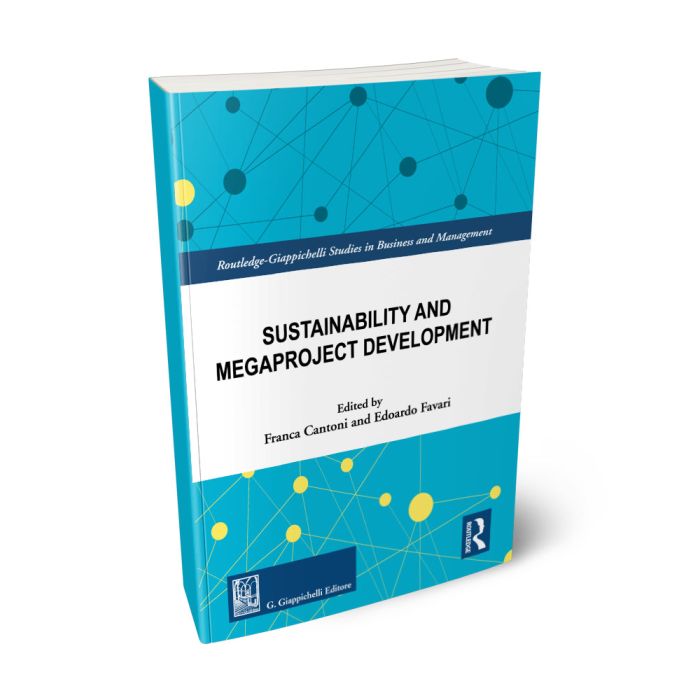Megaprojects are generally defined as large-scale investment initiatives worthing 1b€/$ or more, facing similar problems independently from the country where they are implemented and the industry they belong to. Even if different researches and approaches have been developed in the last 20 years about this topic, there is still a lot of debate on it, and a holistic approach for effectively manage those initiatives is still missing. What is clear to all researchers and expert in this field is that a tradional-linear management approach is simply not enough, as, at many stages of a megaprojects, iterative and feedback effect occurs due to stakeholders’ involvement increase and continuous interaction between them.
The Megaproject Research Interdisciplinary Team (MeRIT) – established in 2018 with the intention of combining the multiple aspects related to the design and implementation of megaprojects – aims to promote the debate around Megaprojects among all categories of stake-holders involved in a megaproject’ supply chain, in order to increase the awareness of complex phenomena in charge of criticalities and common problems they face all over the world, and looking for improvement of performances on the whole life cycle (including the selection, design, construction, operation and de- commissioning).
This volume is one of the multiple outputs of the research group and presents a range of perspectives on megaprojects. This multidisciplinary approach is welcome and promising, since megaprojects themselves are multifaceted and intertwined. They are at the same time physical-technicalengineering constructions, financial-economic undertakings, and socio-political negotiations and outcomes. Success typically requires mastery in each of these domains, and failure can come from anyone.
In line with its goal of setting up a debate among different disciplines, this volume does not come to a final definitive conclusion, but it does provide a number of important insights. It contains a set of essays focusing on different aspects and can ideally be divided into two parts: the first one dedicated to the main challenges and the second one to some significant cases.
It begins with the chapter written by Virtuani, Barabaschi and Cantoni where the human side of megaprojects is highlighted. Megaprojects, given their complexity, have a tendency to fail or at least not to achieve the objectives initially planned. The gross error committed consists in recognizing a marginal role to the management style of human resources and specifically in not giving adequate importance to some leadership traits which instead prove to be fundamental.
Chapter 2, written by Caccialanza, Cantoni, Favari and Mariani investigates if the holistic approach needed for overcoming the “iron law” can be identified in sustainability. Indeed, the “3P framework” – People, Profit, Planet – also referred as Sustainability in Triple Bottom Line is becoming a key driver in megaproject feasibility assessment, planning and management.
Colaizzo and Massiani in chapter 3 argue that multipliers are a key element in the public discussion about fiscal policies and spending programs. In this discussion Input-Output and Social Accounting Matrices still play an important role, although they are more and more in competition with DSGE and econometric models. In their work illustrate these issues by taking various examples based on recent experiences in Italy.
Chapter 4 – written by Timpano and Platoni – higlights the fact that the relationship between investments in infrastructure and growth has been analysed by several studies; recently, because sustainability is increasingly becoming a goal for economic policy, the impact of infrastructures on economic performance has been studied also with respect to sustainability composite indicators.
In chapter 5 Allena presents a research framework about the nature of megaprojects and the role of taxation in promoting their development in sustainable and environmental-oriented way: the precise scope of this research is indeed to give an overview of the relations between tax policies and megaprojects construction, also in light of the present context of Covid-19 pandemic spread.
In chapter 6 Arginelli analyses, from a theoretical perspective, the relevance that the taxation may have on the shaping, effectiveness and efficiency of Megaprojects. In this respect, he also briefly discusses the legal boundaries that the use of taxation for such a purpose encounters, in particular within the European Union.
Zecchin concludes the first part of the volume by dealing with an analysis of the role of private autonomy in megaprojects contracts to face government restrictions due to Covid-19 or to other future pandemics.
In the second part, dedicated to case studies, in chapter 8 Dallara presents some issues of the Cost-Benefit Analysis (CBA) of an intermodal logistic node.
In chapter 9 Favari, Maja e Mariani evaluate the economic feasibility of a revolutionary transportation mode (Hyperloop) applying a broad approach, according both the indications of the European Commission’s Guide to Cost-Benefit Analysis of Investment Projects (2014) and evaluating also the innovation benefits that such transportation mode, if implemented, will bring.
Marino and colleagues provide a description of the state of the art of the debate about the alternatives for a stable crossing of the Strait of Messina, one of the most discussed public works in Italy.
Sermasi and Frascari conclude the part dedicated to case by affirming that Project Management (PM) techniques and Building Information Modelling (BIM) tools can be used to support each other when dealing with Large Project Design. The Case Study regards the Design of the New Galliera Hospital in Genoa, Italy, carried out by the Joint Venture led by the Consultant’s firm “Politecnica Ingegneria ed Architettura”.
In all, the contributions provide a useful review of the multiple perspectives required to understand, design, and manage megaprojects and serve to highlight the often underemphasized social and political aspects and the deep stakeholder engagement needed at all stages.











